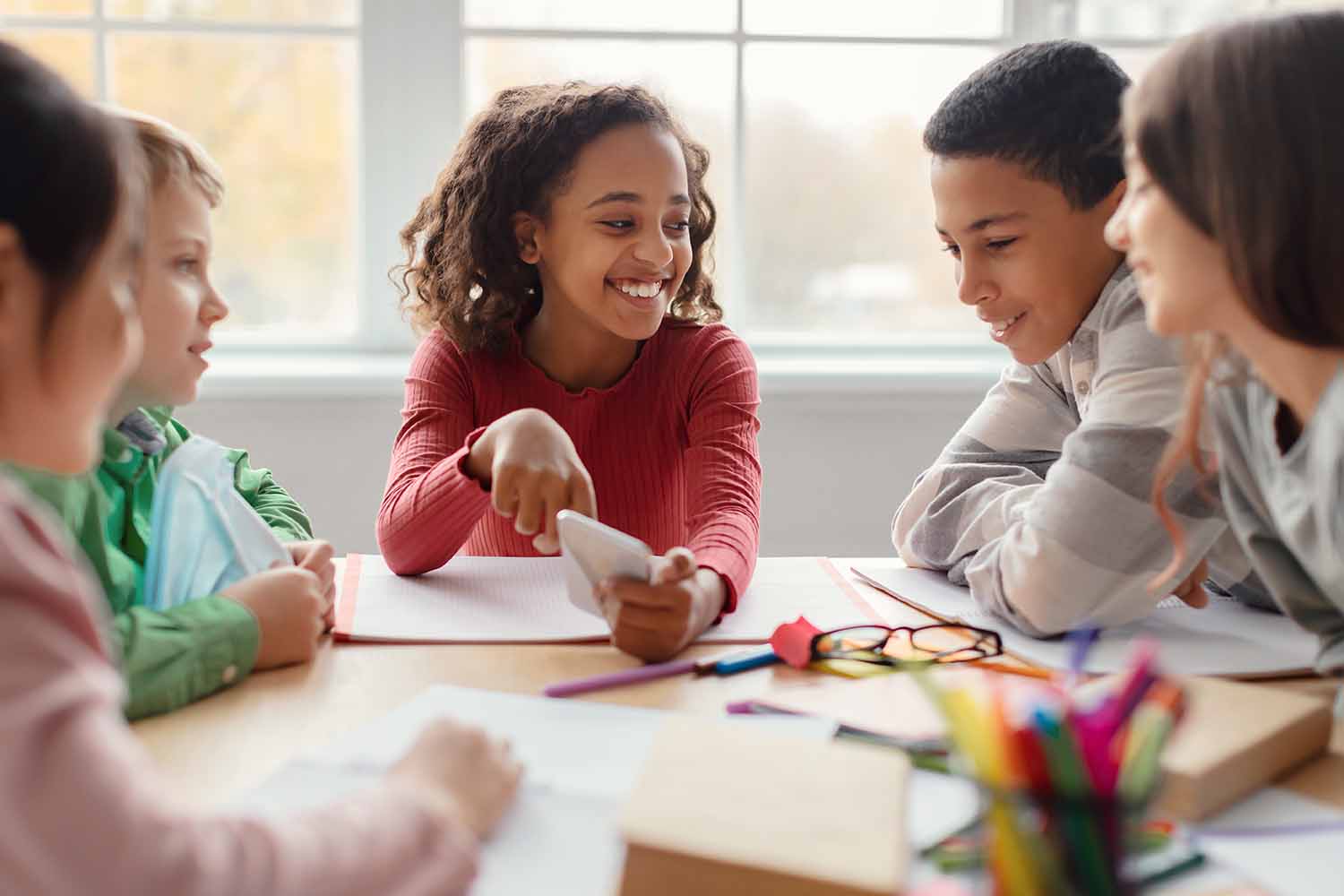How Can Teachers Promote Resilience in Students?
Educators often tell us that they feel powerless when faced with the gut-wrenching traumas and hardships that some of their students have experienced. You may have thoughts of helplessness, like: “What can I possibly do? This student is only in my class for one year, and I can’t control what’s happening to them at home.”
While it may be true that you can’t control students’ home lives, there is one way you can make a powerful difference for these students: by helping them strengthen their resilience.
Let’s talk about what resilience is, why it’s so important for educators to focus on building resilience with their students, and how you can teach this valuable skill.
What is resilience, and why is it important for students?
Resilience is the term we use to describe our ability to bounce back from challenges. Unfortunately, trauma is more common than you may think, even in childhood. Reports show that up to 25% of U.S. students have faced at least one traumatic event by the time they’re 16. Resilience is about how well these children are able to thrive despite these painful experiences.
Promoting resilience is one of the most important things you can do as an educator. Sadly, we may not have very much control over our students’ lives and what traumatic events they live through. But what we can do is help students be better prepared for these challenges, and help them strengthen their ability to overcome them.
Resilience is a skill that can be learned just like any other. When students are given opportunities to study and practice resilience, they’re more likely to be able to use it to rise to the occasion when life gets difficult.
And it’s not only children affected by abuse and trauma that benefit from resilience. Although these students may especially benefit, the truth is that life isn’t perfect for anyone. Every student in your classroom is bound to face some challenge or another, whether it’s failing a test, getting bullied, or losing a loved one.
Helping your students strengthen their resilience can help them to suffer fewer long-term consequences of these difficulties and teach them the lifelong lesson of how to overcome life’s hardships.

How to build resilience in children and teens
There are many things you can do as an educator or school counselor that help your students become more resilient. Here are some tips.
Create relationships
Research suggests that having a positive relationship with just one caring adult greatly increases children’s resilience against adverse childhood experiences like abuse. This is the number-one power that educators have. So, above all, work on building strong relationships with each and every student who walks into your classroom.
You can build relationships with your students by listening with empathy and paying attention to the details of what they tell you so that they know you care. Give them praise, and focus on connecting with them before correcting behavior.
Create community in your classroom, and help students connect to each other as well as with you. If you’re having a hard time connecting with some students, take action. Talk to your principal, school counselor, or a professional mentor about how you can build trust. It may also be a good idea to connect these students to another caring adult (like a counselor), especially if you know they have experienced trauma.
Teach emotional awareness
One important skill that helps children be more resilient is emotional self-awareness. Students who are able to identify and describe what they’re feeling are more likely to be able to self-regulate these emotions. And when children can self-regulate, they have an easier time bouncing back from challenges without becoming overwhelmed.
As part of your SEL curriculum, teach students the skill of emotion identification. Talk to them about what different emotions are called and help them identify their own triggers and emotional signs.
Build self-efficacy
Promoting resilience is all about empowering students to understand that they have the ability within themselves to overcome life’s inevitable challenges. Children need to have a sense of mastery and competence over the obstacles they face and know that they have the skills required to face them.
As an educator, you can provide opportunities to build that mastery. Help students work toward realistic goals, and celebrate their achievements. Encourage them not to give up and to keep trying even when things get difficult.
Even the smallest classroom tasks can become a lesson in self-efficacy. For example, perhaps one of your kindergarten students wants to give up on their art project because they can’t figure out how to use a glue stick. You can help this student work through the challenge and master this skill – which teaches them that they have the ability to overcome challenges.
Self-efficacy is all about taking back control in a world that may seem chaotic and unpredictable. This is especially important for children who are facing abuse and neglect. Although many parts of their life circumstances are outside of their control, help them identify the things in their life that they can master.
Foster healthy self-esteem
Children often blame themselves for the difficult things they go through. We see this often in children who are mistreated by their caregivers. This type of abuse and neglect significantly affects children’s self-esteem. And this poor self-esteem can lead children to continue unhealthy behavior patterns as they grow and become less resilient against challenges.
You have a unique opportunity to ensure that students leave your classroom with a stronger sense of self-worth than they had when they arrived.
It’s not just about indiscriminately praising students for whatever they do. Be specific in your praise; affirm specific behaviors and efforts they make. Try to look at all students with unconditional positive regard, which means that you believe in their inherent worth regardless of how they behave (or misbehave).
Teach mindfulness
Evidence shows that mindfulness is one of the most powerful ways to foster resilience. This is part of the reason why mindfulness is so beneficial for our mental well-being – it helps us bounce back from painful experiences. By teaching the skill of mindfulness to your students, you can help them become more self-aware, handle stress better, and be more prepared to deal with any difficulties that they may encounter.
Calm Classroom makes it easy for anyone to teach mindfulness to their students, regardless of previous experience. Learn more about our programs or get in touch with us today.





SIGN UP FOR OUR NEWSLETTER